Experienced gardener or new gardener your gardening success will be greatly helped by planning the garden before you begin the growing season. The purpose of a garden plan is to make your work less and your returns more. A garden plan and a couple of supporting lists can guide you through this growing season and growing seasons to follow, telling you what improvements to make next year and the next.
Vegetable garden planning overview
Growing a vegetable garden is not difficult. If you haven’t grown a vegetable garden before here are ten things you should know as you prepare for the growing season. If you are an experienced gardener, review these tips and then pass them along to a neighbor or friend.
You can grow vegetables year-round no matter where you live. And you can start your growing any time of the year. The articles included in this round-up will help you get growing at whatever level of experience you have.
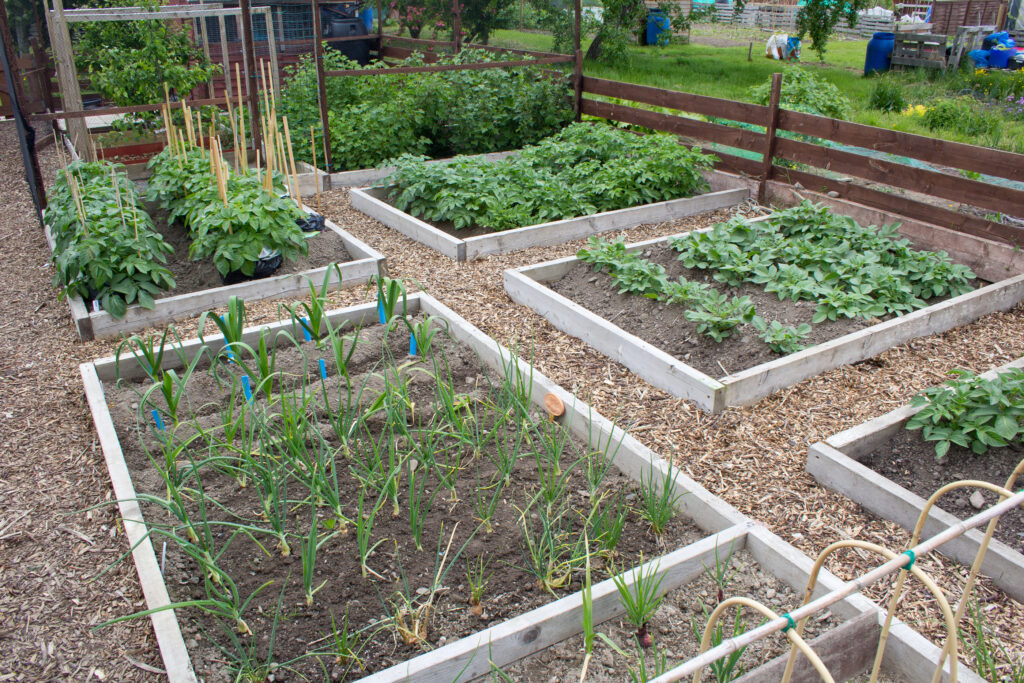
10 tips to plan a vegetable garden
Here are tips to get your vegetable garden growing.
1. Visit other gardens
- Get a good start by visiting nearby vegetable gardens. Make a list of the vegetables you and your family eat. Start growing these crops first. Here’s more: How to Start a Vegetable Garden.
2. Know cool and warm season vegetables
There are two basic types of vegetables to grow: cool-season crops and warm-season crops. Cool-season crops are leafy crops for salads and root crops for stews, soups, and munching. Warm-weather crops are fruiting crops—tomatoes, peppers, cucumbers, beans, melons, and squash. You have to plant each crop at the right time of the year. Here’s more Cool-Season and Warm-Season Crops and Vegetables in the Right Season.
3. Know your growing season
Know the average date of the last frost in spring and the first frost in autumn. The time in between is the natural growing season. If you grow before the last frost or after the first frost you have to protect most vegetables from the weather. Protecting crops from harmful weather is called season extension—you are extending the natural growing season. You can find the dates of the average first and last frost online—check weather sites, or from the cooperative extension or master gardener group near you. Learn more: Average Date of the Last Frost and Days in the Growing Season.
4. Choose seeds or transplant
There are two ways to start growing your vegetable garden: from seeds or from transplants. Some vegetables are easily started from seeds planted directly in the garden; others are best started indoors under optimal conditions you can’t always get outdoors. If you grow from transplants you can start seed in your own kitchen or buy seedlings at the garden center that were started by a grower. More tips on seed starting: Seed-Starting in Three Steps and Seed Starting Schedule for Next Season. Want seed starting tips for specific crops: go to Seed Starting Specific Crops in the Index then scroll down to find the crop you are growing: you will find a seed starting calendar for each crop as well as seed starting tips.
5. Know what each crop needs
Each vegetable crop you grow has preferences—site, sun, soil, planting requirements, watering, and feeding requirements. You can’t go wrong if you give vegetables 8 hours of sun each day, grow in compost-rich soil, keep the soil just moist, and feed plants organically—more aged compost will do it. Want to know exactly what the crop you are growing needs? Check out the How to Grow profiles in the How to Grow index.
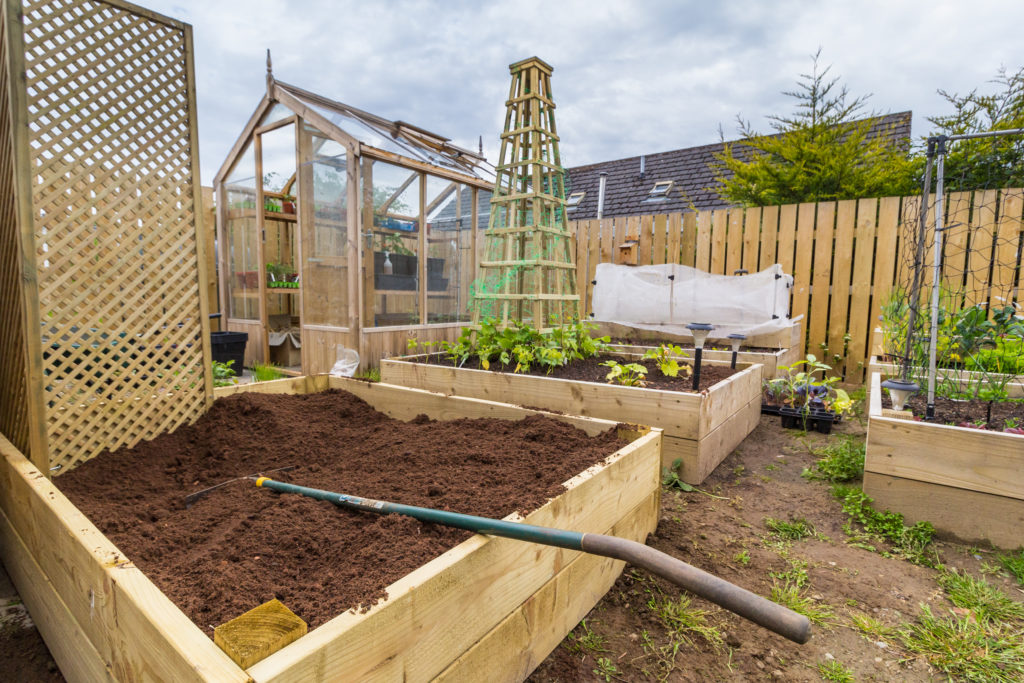
6. Learn about garden soil
True garden wisdom says: Don’t plant a 5-dollar plant in 50 cent hole; plant a 50-cent plant in a 5-dollar hole. That means planting in great soil. All of the nutrients and moisture plants require for a generous and flavorful harvest come from the soil. Organic gardeners say: feed the soil, not the plant. If you feed the soil, you will feed the plant. More good soil tips at: Soil: Making the Kitchen Garden and Organic Fertilizers and Soil Amendments.
7. Keep vegetables watered and well-fed
Just about all of the nutrients vegetables require to reach harvest are delivered through the plant’s water-conducting capillary system. Plant nutrients come from the soil and are carried throughout the plant by water. Add aged nutrient-rich compost to the soil and the soil will be both well-drained and moisture retentive. Keep nutrient-rich soil moist and you will naturally feed your plants. More tips at Vegetable Watering Tips and Vegetable Critical Watering Times. Also Fertilizer Side-Dressing Vegetable Crops.
8. Learn about pests and diseases
Into nearly every garden sometimes a pest, disease, or environmental-related problem will venture. Do not panic; it’s par for the course and you can often curb pests, diseases, or other problems before they spread from a single plant to the whole garden. If you visit your garden every other day or so, you will be able to nip problems in the bud. Check out the Pests and Diseases topic index (more than 50 helpful articles). See also Common Vegetable Garden Problems: Cures and Controls. And the Vegetable Pest Problem Solver and the Vegetable Disease Problem Solver.
9. Know when to harvest
The most flavorful vegetables are harvested at or before the peak of maturity. When you plant make a note in your calendar of the crop and its days to maturity, also count the days ahead mark the harvest date on your calendar. Harvest when the crop is nearly mature—you will be amazed at the flavor. Want helpful harvest tips for each crop: type in the search box above How to Harvest and Store plus the name of the crop, e.g. How to Harvest and Store Tomatoes. Also check out Vegetable Harvest Times: When to Pick.
10. Learn about extending the growing season
Season extension means growing vegetables outside of the natural growing season. Starting seeds indoors in early spring before the soil and weather are warm is one way to extend the season. Keeping crops growing after the first frost and through the winter is another way. That means you can extend the season both early and late. Season extenders to keep crops warm in chilly weather include row covers, plastic tunnels, and cold frames. Read up on season extension: Vegetables to Seed Start Indoors and Extending the Season How to Get More Time Out of Your Vegetable Garden and Plastic Tunnels for Growing Vegetables. If you live where summer is very hot, you can extend the season with shade cloth: see Hoop Tunnels to Shade Vegetables and Dry Vegetable Gardening.
Want more tips on growing all year long? Check out the Almanac section in the topics index, look up each month in the index, or check out the Vegetable Garden 12 Month To-Do Calendar.
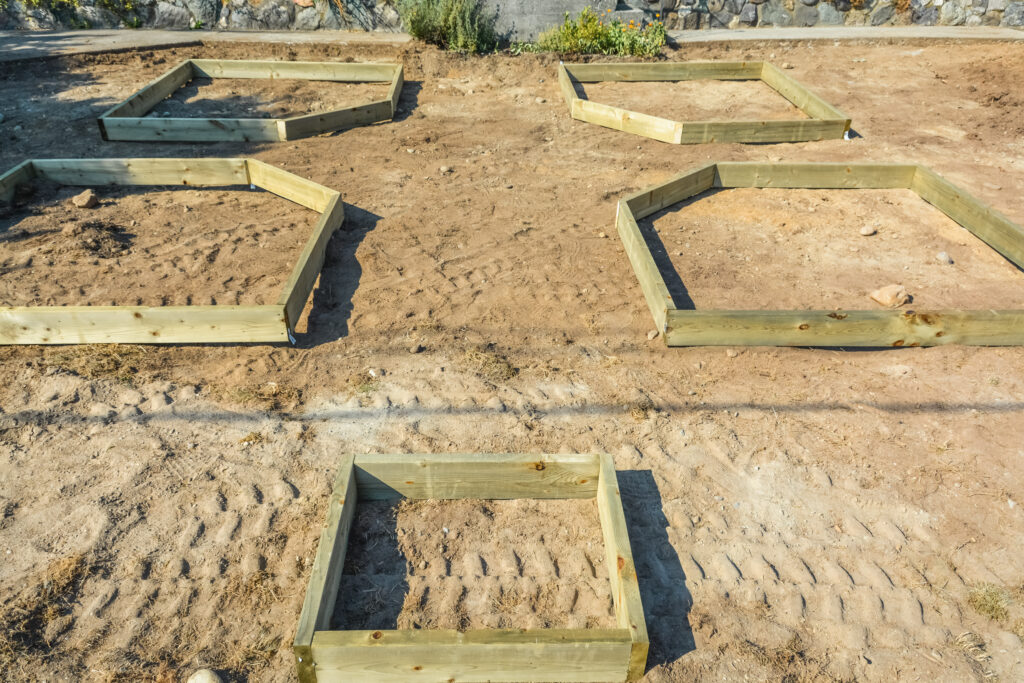
Four vegetable garden planning tools
Here are four planning tools you can use this year (use them, modify them, use them in combination as you wish, and you will gain greater efficiency in gardening):
- Planting plan
- Planting gable
- Checklist–for planting and growing
- Garden record
Garden planting plan
A planting plan is a map of your garden–of the whole garden or a specific planting bed. Design your vegetable garden–lay it out–on paper first. Tracing pads of graph paper come in 8½ inches by 11 inches or 11 inches by 17 inches. You can choose from several grid sizes: four squares to the inch are practical for laying out a garden to scale. On tracing paper, mark off a space in the shape of your garden. (Why use tracing paper? You can overlay this year’s garden on the plan for last year’s garden–or do this in the future. This will allow you to plan crop successions and rotations.)
Your garden should be big enough to grow what you will eat or what you plan to store or give away. Don’t make your garden any bigger–a garden too big will lead to a waste of food and time. Use a list of the crops that you want to bring to the table and the number of servings you have in mind for the season to decide on the number of plants.
To begin your planting plan use sticky notes to plan the garden. Cut the stickers to size, label them, position them, and re-position them on the graph paper. Set out rows or blocks of each crop you plan to grow. You can even attach photos cut from old seed catalogs to the sticky notes. Moving the sticky notes around a garden plan is easier than moving seedlings or plants around in the garden.
As you design the garden, keep crops that remain for several years in the garden–such as rhubarb and asparagus–at one end. Place crops that will remain the whole season–parsnips, carrots, onions, and the like–next. Finally, plan the placement of crops that will be planted in succession, crops that will be in the garden for only part of the season–peas, lettuce, spinach. Tall-growing crops, like pole beans, are kept to the north of lower ones. In your plan, give space to each crop according to the proportion in which they will be used in the kitchen. If you love peppers, keep that in mind as you lay out your planting plan.
(Obviously, a planting plan is a very good way to plan a flower garden, as well. Use the sticky notes to arrange colors and textures and height. Use pictures of plants in various seasons to see how the garden will look throughout the year–bulbs, annuals, and perennials. Make notes for changes next year as the season progresses.)
Planting table
A planting table is a simple columned chart that will give you the details of your crops at a glance. It tells the treatment that each vegetable requires: when to sow, how deep, how far apart in rows or blocks, and how long until germination and harvest. You can also jot down quick planting and growing notes for each crop. Take the planting table into the garden mounted on a piece of cardboard at planting time. This will save you from running back and forth to your garden books or seed catalogs.
Update your planting table with experience: note what crop varieties were planted and how they performed.
Garden checklist
A checklist for planting and growing can be completed with the initial planting table. The checklist puts all of the planting tables notes into chronological order: which crops are sowed first, which crop is next, and when are seedlings transplanted into the garden. The checklist is a counterpart to the planting table; use it to make sure nothing is overlooked or left until too late. Your checklist can be made up of the planting table, seed catalogs, and the previous year’s garden record. On your checklist put down things to be done each month (or week) and cross them off as you attend to them. The checklist is used throughout the season (and updated with notes for next year) and assures you that important tasks are not overlooked.
Garden record
Your garden record is your record of results: what happened in the garden. Keep it simple: which crops did you grow, which varieties, date sowed or transplanted, date harvested, and other notes. Your garden record will be of the greatest assistance in planning the garden next season. Start the garden record at the beginning of the season with your list of planted crops and varieties; fill the record in with dates and notes: note the day you planted, or harvested; note anything worth recording. Keep the record day to day; don’t let it go until tomorrow. Last year’s garden record becomes a blueprint for next year’s garden plan.
Use your garden record and your planting plan to plan next year’s vegetable garden. Which vegetable variety was most successful? Did the harvest come in on time? Was there enough space for each plant? What do you want to plant more of or less of next year? Was there time for crop succession? Which crops should be rotated to a new spot next year?
Do not fear that you will waste time on planning. Planning will make your garden time count the most in producing results.
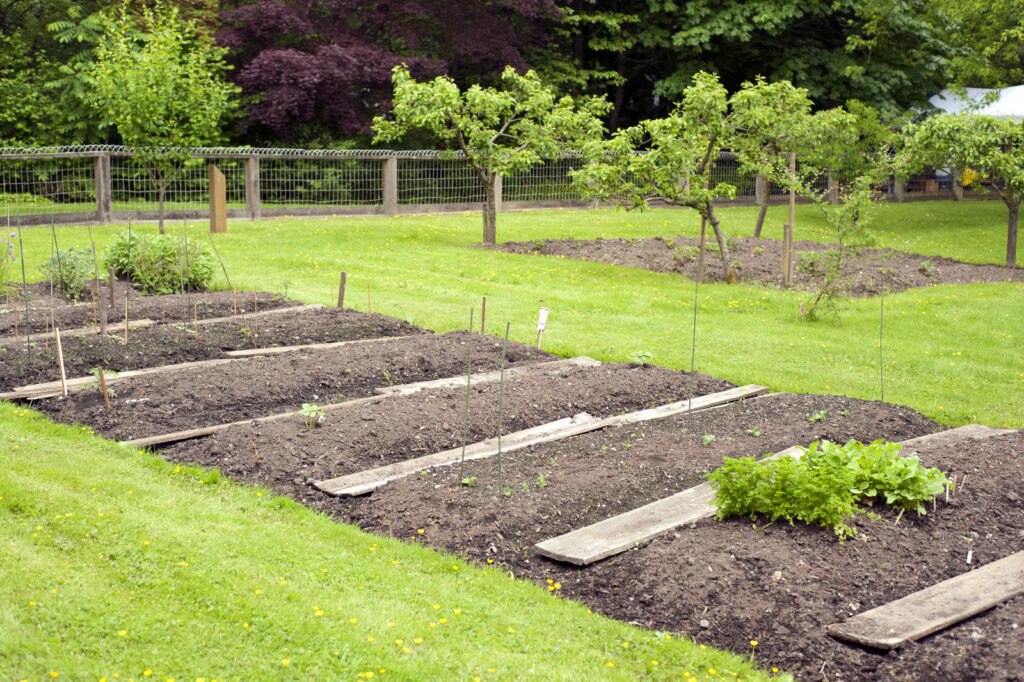
How to plan a vegetable garden on paper
Plan your vegetable garden on sticky-backed plant photos or plant sketches on Post-It Notes set on grid paper. This easy method will allow you to plan both initial vegetable crop sowings and plantings and succession crops before the weather warms and you get busy preparing and planting garden beds.
Plan the garden on paper in five steps:
- Determine how large your planting beds will be and choose a grid paper to represent square inches or square feet in the garden. A grid of 4 x 4 to the inch cross-section will give you plenty of room to plot both large and small crops. Use a separate sheet of grid paper for each planting bed.
- Cut photos of each crop from old seed catalogs or garden magazines or sketch each crop and tape or glue the photo or sketch on sticky notes so that they can be arranged and moved around the grid paper. On each sticky note, jot the size of the crop at maturity and note the days to harvest from sowing or transplanting into the garden. Be sure each sticky note fills the appropriate number of squares on the grid paper so that you have a clear vision of your planting bed.
- Arrange sticky notes on your grid paper taking into consideration the space required for each crop at maturity. Also, consider the number of days to harvest for each crop. Group crops so that they will be easy to maintain and harvest. Consider inter-cropping tall crops next to shade-loving short crops or place quick-growing crops between slower-growing crops so that they come to harvest before the larger crops gain full size.
- To plan succession crops and crop rotations consider the days to harvest for the first crop and the number of days to harvest for the succession crop; make sure there are enough days in the growing season for the succession crop. Keep in mind the importance of crop rotation to stem pests and diseases; avoid planting crops from the same plant family in the same bed successively.
- Sticky notes can be used again and again to plan new planting beds and future seasons. Make a copy of each planting bed you design; leave room to note the date you planted and the date you harvested and any growing notes for future plantings of the same crops. Well-designed and successful plantings can be filed away to use again in future growing seasons.

Your vegetable garden plan and what you eat
The best way to plan your vegetable garden is to give some thought to what you eat or would like to eat and how much. Make notes of all of the fruits and vegetables that you bring to the table or pack for lunch. These fruits and vegetables can become the starter crops for your kitchen garden.
Keep a food diary
When you start to keep a record of what you and the people in your household eat, you will begin to have an idea of exactly how large your kitchen garden should be. How many heads of lettuce do you or your family eat in a week or a month? How many carrots or onions? How many beans or squash? How many potatoes or tomatoes? How many pumpkins do you eat in a year? And while you’re making this list, don’t forget to count the vegetables in that can of soup you opened at lunch. In a few months that vegetable soup could be fresh from your kitchen garden.
Check the frig
If keeping a food diary for a week or two sounds like too much work, try this: open your refrigerator and look at the fruits and vegetables inside. Treat them like crop census. There’s a head of lettuce and three tomatoes, a bag of beans, and a zucchini. On the kitchen counter two apples and a couple of oranges. All of this for a week’s eating. Now you can do some simple multiplication to determine how many of these plants you will need in your kitchen garden.
Keep the garden small to start
In all likelihood, your vegetable garden will be much smaller than you first imagined. If the last time you planted a vegetable garden you ended up with bushels of uneaten zucchini, then this time out you need to plant fewer summer squash. Of course, that means less time in the garden and more time at the table enjoying your crops. A kitchen garden is very doable.
A vegetable garden just 4 feet by 4 feet will be large enough to bring enough food to your table for an entire summer: one head of cabbage, one head of broccoli, one head of cauliflower, 16 heads of lettuce, five pounds of sugar peas, eight bunches of chard, nine bunches of spinach, 32 carrots, 16 beets plus beet greens, and 32 radishes. In a garden small enough to reach your arm halfway across, you can grow enough food to keep your salad plate and vegetable soup pot full through most of the year.
It can be small: just a few pots of herbs or salad vegetables. It can be a bed or two dedicated to the diversity of fruits and vegetables you eat every week or the food you like to give away to friends and neighbors. Your kitchen garden can be a converted flower bed bordering a fence or a hedge. Your kitchen garden can be a few edible flowers mixed with salad greens surrounding a fruit tree at the edge of the patio. Your kitchen garden can be a small raised bed with a comfortable bench right under your kitchen window.
Your vegetable garden will give you fresh and flavorful fruits, vegetables, herbs, and edible flowers. It will offer you ingredients at the peak of ripeness to be enjoyed minutes after harvest or first thing tomorrow. The kitchen garden will give you fruits and vegetables when they are the most tasty.
Your kitchen garden should be close to your vegetable. It is a garden for the kitchen.
More planning tips
In addition to starting your vegetable and fruit diary, here are a few more tips to think about as you plan your vegetable garden:
- Growing vegetables require full sun for at least six hours each day.
- Sow or plant each vegetable during the appropriate season when the temperature is right for that crop.
- Vegetables grow best in soil that is deep, level and well-drained.
- Soil is your kitchen garden’s most important asset. Your soil can be improved.
- Plant vegetables the right distance apart and you can avoid weeding and keep watering to a minimum.
- Harvest vegetables when they are ready, at their peak, and you will enjoy flavors that are memorable!
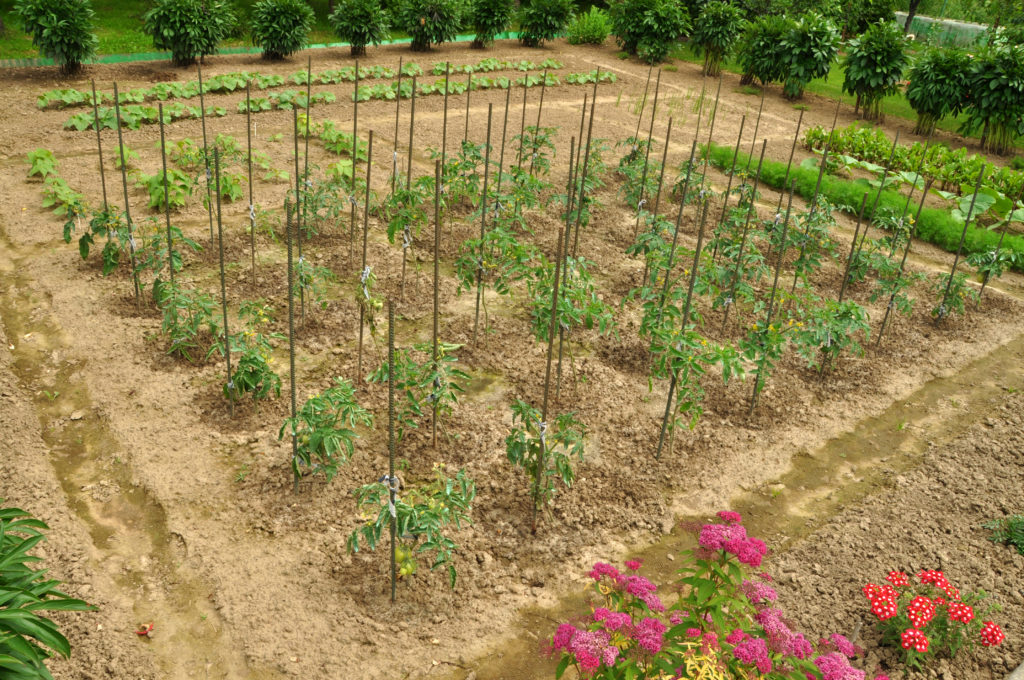
Vegetable garden facts and trivia
Vegetable gardens have been around for a very long time. The first kitchen gardens were enclosed in small walled spaces protected from wildlife and blowing desert winds. During the Middle Ages, monks developed kitchen gardens designed in four squares often with a spring or a fountain at the center. Each square was set apart by a permanent path. The growing beds were often slightly elevated to capture the warmth of the sun.
During the eighteenth and nineteenth centuries, the French turned the kitchen garden into a near art form. Beds were designed in geometric patterns and formally edged with evergreens. Arbors, pergolas, and trellises were used to espalier and cordon fruits. Edible flowers were introduced for color. The French used the term “potager” to describe the kitchen garden. While the design was essential to the potager, the core of the potager was the very definition of the word. A “potage” is an herb or vegetable that goes into the pot on the kitchen stove.
Thomas Jefferson was one of the first American kitchen gardeners, and so was George Washington. Today there are still kitchen gardens at Monticello and Mount Vernon. They are distinguished from surrounding farm fields by their diversity. A kitchen garden offers a range of fruits and vegetables and herbs. The kitchen garden offers crops that can sustain a kitchen and the people it feeds. A kitchen garden is not a field filled with just one crop.
Related articles:
How to Start a Vegetable Garden
Small Vegetable Garden Space Savers
Garden Planning Books at Amazon:
- Vegetable Garden Grower’s Guide
- Tomato Grower’s Answer Book
- Vegetable Garden Almanac & Planner
- Kitchen Garden Grower’s Guide Vegetable Encyclopedia



